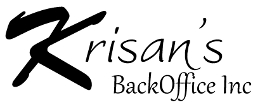
What’s the difference between a Group and a Set in PortfolioCenter?
Group = reporting unit
A Group is a collection of accounts usually related by family and typically a unit that you’d like to see on one report. For one family you might have any of the following groups in PortfolioCenter:
- All Accounts – every account the family owns (his IRA, her IRA, Junior’s UGMA, their joint tenant, etc)
- Parents Accounts – only the accounts owned by and for the benefit of the parents (both taxable and tax-deferred)
- Child’s Accounts – only the accounts owned by or for the benefit of the child (UGMAs, Roths, 529s, etc)
- Tax Deferred Accounts – only the retirement and tax-deferred savings accounts
- Taxable Accounts – only the taxable investment accounts
- Her Accounts – only the accounts owned by and for the benefit of the wife
- His Accounts – only the accounts owned by and for the benefit of the husband
An account can belong to as many Groups as you wish, and a Group can contain as many accounts as you wish. Since Groups increase processing time and the database size, you should create only the Groups for which you expect to need reports. You can always create a Group later if you decide you need it, and you can delete Groups you no longer need without losing the individual accounts.
Set = collection of of reporting units
A Set is a collection of both accounts and Groups that share some common characteristic. Typically you would not run one report on a Set, rather you would run the same report on every member of the Set. Examples:
- all taxable accounts
- all tax deferred accounts
- active accounts and groups (vs closed accounts and groups)
- discretionary accounts
- non-discretionary accounts
- client households (all the family units you report on)
- accounts managed by a specific advisor
You use Sets to perform a certain task for all accounts of a certain type. For example, if you want to run a realized gain/loss report on all taxable accounts, you need a set of taxable accounts.
Fortunately, PortfolioCenter offers “Smart Sets” which can be updated based on your rules. For example, a Smart Set of active taxable accounts would be based on the rule “include only accounts where taxable is true and closed is false.” You do not need to know which accounts fit this criteria. When you update Smart Sets, PortfolioCenter adds every account that fits the rule to the Set and drops accounts that no longer fit from the Set.
You can perform most common tasks if you create a group for each client household and the following Sets:
- open accounts only (no groups)
- all open accounts and groups
- open taxable accounts,
- open tax deferred accounts
- discretionary accounts (both open and closed)

